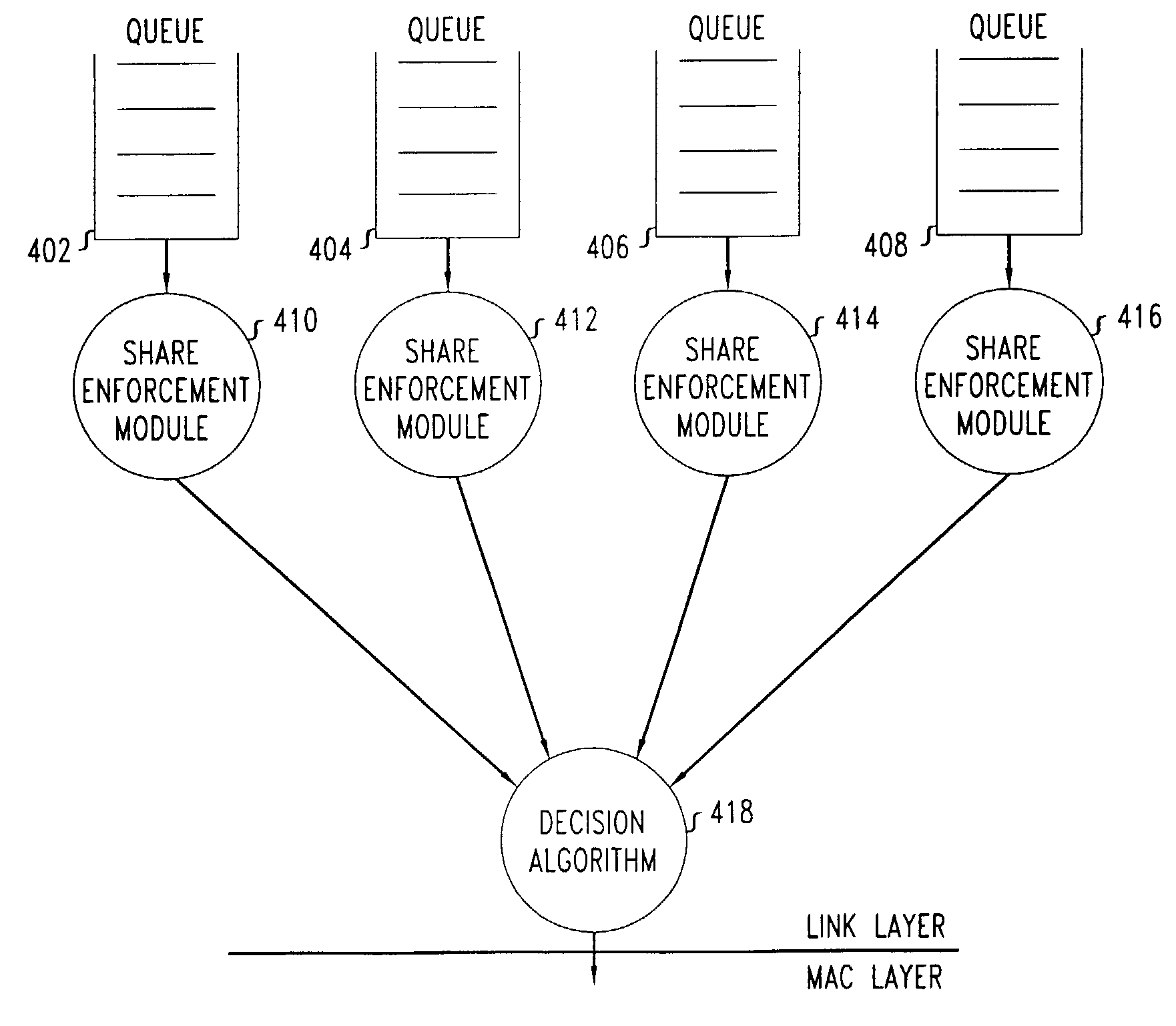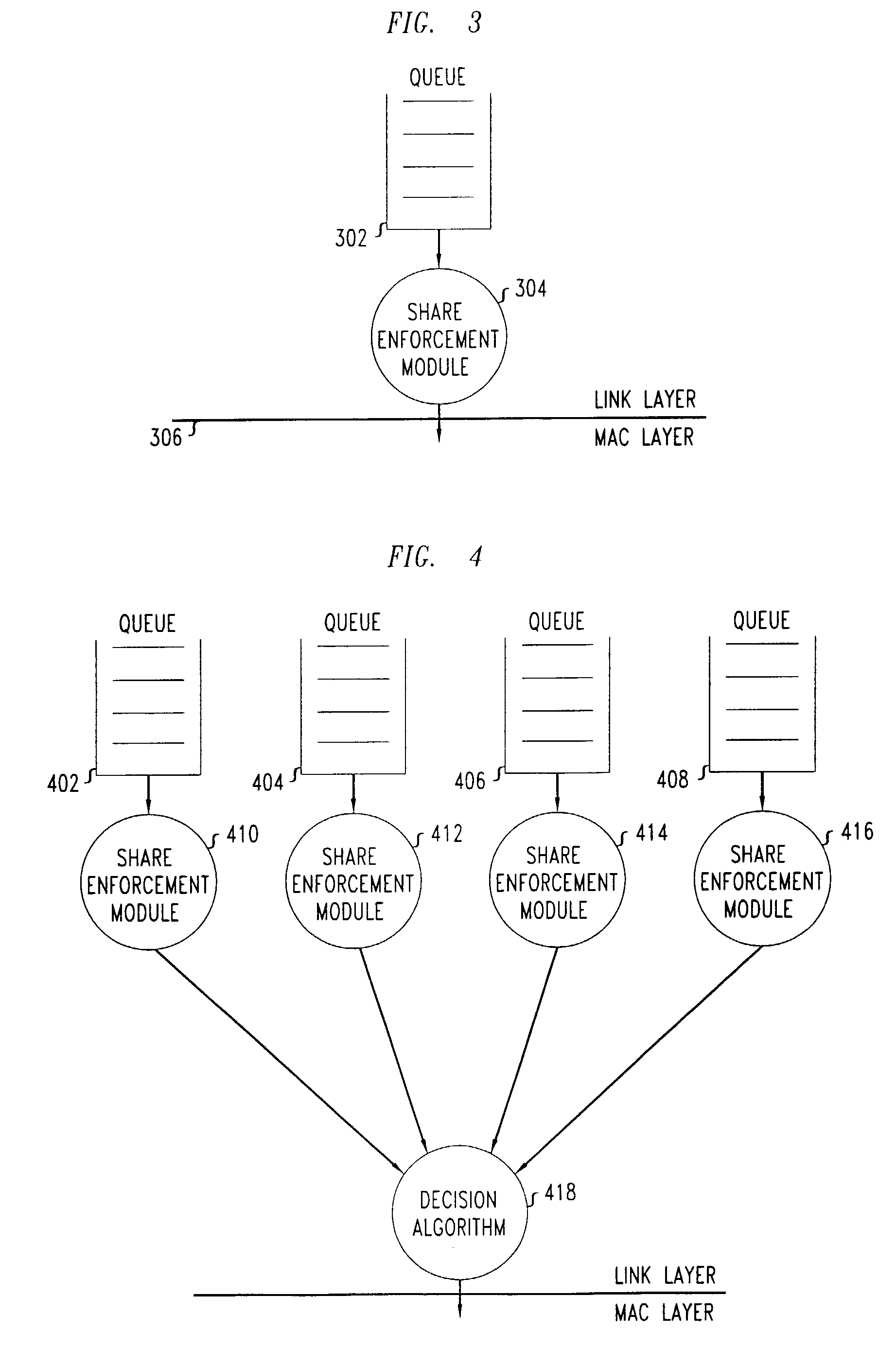Fair sharing of multi-access channels
- Summary
- Abstract
- Description
- Claims
- Application Information
AI Technical Summary
Benefits of technology
Problems solved by technology
Method used
Image
Examples
Embodiment Construction
[0023]As described above in the Background section, there are generally two types of network nodes, host nodes and gateway nodes. FIG. 1 shows host nodes 106, 108, 110, and gateway node 104. FIG. 3 show a functional block diagram of the portions of a host node 300 relevant for an understanding of one embodiment of the present invention. As would be well understood by one of ordinary skill in the art, the elements shown in FIG. 3 represent functions of the host node 300. For example, line 306 is shown as a border between the link layer and the MAC layer, both of which are software layers in the network protocol stack. Functions shown above the line 306 are implemented in the link layer, while functions shown below line 306 are functions implemented in the MAC layer. The actual functions may be implemented in software, hardware, or a combination of software and hardware. For example, the functions described herein may be implemented using a computer processor and stored computer progr...
PUM
 Login to View More
Login to View More Abstract
Description
Claims
Application Information
 Login to View More
Login to View More - R&D
- Intellectual Property
- Life Sciences
- Materials
- Tech Scout
- Unparalleled Data Quality
- Higher Quality Content
- 60% Fewer Hallucinations
Browse by: Latest US Patents, China's latest patents, Technical Efficacy Thesaurus, Application Domain, Technology Topic, Popular Technical Reports.
© 2025 PatSnap. All rights reserved.Legal|Privacy policy|Modern Slavery Act Transparency Statement|Sitemap|About US| Contact US: help@patsnap.com



